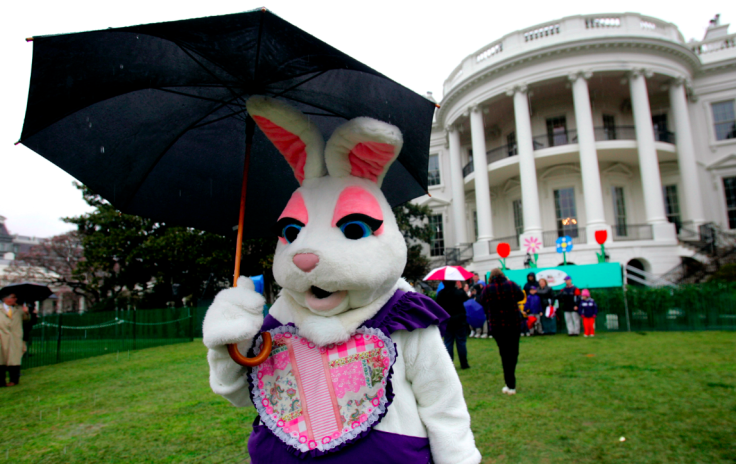Easter Bunny History And Origin 2016: 10 Facts And Trivia To Know

He doesn’t have a song comparable to the one about Santa Claus, but the Easter Bunny is a fun aspect of the Christian holiday. He delivers baskets, filled with toys and treats, to good children and hides eggs on the first Sunday after the first full moon of spring. But how the Easter Bunny became associated with the holiday, given the fact he isn’t in the bible, is not widely known. To find out more about the magical creature who rewards well-behaved children, continue reading:
1. The association began in the 18th century, when German immigrants settled Pennsylvania. They called the Easter Bunny, a hare that laid eggs, Oschter Haws or Osterhase. The children of these immigrants would create nests so the bunny would have a place to lay his eggs, which came out in pastel colors. The nests eventually became baskets that contained candy and gifts.
2. The tradition of painting eggs also started when Germans came to America.
3. The term “Easter Bunny” wasn’t used until 1900.
4. The chocolate Easter Bunny also came from Germany. Such delicacies became popular in the 1890s. One of the first stood 5 feet tall and was displayed in a drugstore by Robert L. Strohecker, according to Smithsonian magazine.
5. Some claim the Easter Bunny was inspired by the pagan holiday centered on the Anglo-Saxon and Germanic goddess of fertility, Ēostre, aka Ostara. Rabbits represent fertility and rebirth, which are associated with springtime. Similarly, eggs symbolize fertility and rebirth.
6. There is controversy surrounding the Easter Bunny, because of his purportedly pagan origins. However, Christians have claimed the egg represents the resurrection of Jesus Christ.
7. Easter is the second-best holiday for candy retailers. The jelly bean became associated with Easter in the 1930s, and the marshmallow Peep made its debut in the 1950s. (Of course, Halloween is the best time for candy sellers.)
8. New York’s Easter Parade dates back to the mid-1800s. Nowadays, the parade proceeds on Fifth Avenue from 49th Street to 57th Street.
9. Most chocolate Easter Bunnies are hollow because they’re easier to eat that way.
10. Children leave out carrots for the Easter Bunny, to replenish his hop around the world, just as they leave out milk and cookies for Santa Claus.
Follow me on Twitter @mariamzzarella
© Copyright IBTimes 2024. All rights reserved.






















